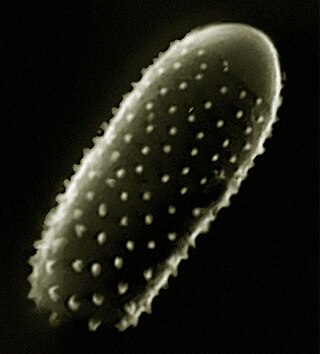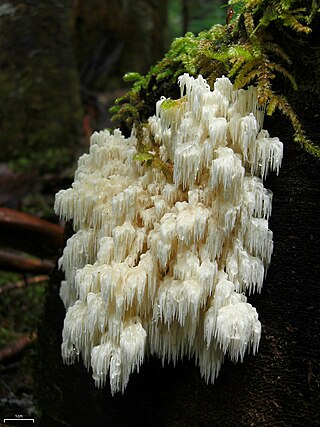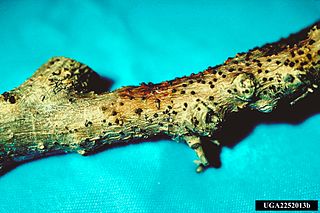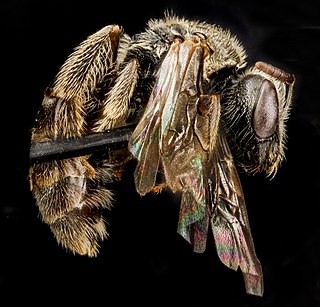
Hylobius abietis or the large pine weevil is a beetle belonging to family Curculionidae. This species is widely regarded as the most important pest of most commercially important coniferous trees in European plantations. Seedlings planted or arising from natural regeneration after clear felling operations are especially at risk. The adult weevils cause damage by eating the bark of seedlings around the 'collar' of the stem, thus 'ring-barking' the tree seedling which usually results in its demise.

Phyllosticta is a genus of fungi. Many of the species in this genus are common and important plant pathogens. They typically infect the foliage and cause tannish-gray leaf spots with dark brown to purple borders. However, Phyllosticta may also infect fruit and stems. Yield loss is a common consequence of Phyllosticta infection. The genera is found worldwide and on a wide range of plant hosts.

Zygaena ephialtes is day-flying species of burnet moth found in Europe. It is typically found in xeric habitats, and populations have recently decreased. It also exhibits Müllerian mimicry with other species, like Amata phegea.

Guignardia is a genus of fungi in the family Botryosphaeriaceae.

Melampsora is a genus of Basidiomycota fungi. Melampsora species are plant pathogens.

Pestalotiopsis is a genus of ascomycete fungi in the Sporocadaceae family.
In the 10th edition of Systema Naturae, Carl Linnaeus classified the arthropods, including insects, arachnids and crustaceans, among his class "Insecta". True bugs and thrips were brought together under the name Hemiptera.

Hericium abietis, commonly known as the bear's head, conifer coral hericium, or western coral hedgehog, is an edible mushroom in the tooth fungus group. It grows on conifer stumps or logs in North America, producing a cream white fruit body up to 10–75 cm (4–30 in) tall and wide. It fruits from after the start of the fall rains to mid-season.

The pineapple gall adelgid is a species of conifer-feeding insect that forms pineapple-shaped plant galls on its host species, commonly Norway and Sitka spruce. The adelgids are pear-shaped, soft-bodied green insects with long antennae, closely related to the aphid. Adelges lays up to one hundred eggs at a time, one on each needle. Adelges abietis is one of the most common species; synonyms are A. gallarum-abietis, Chermes abietis and Sacciphantes abietis.
Aplosporella is a genus of fungi in the family Botryosphaeriaceae.
Dothiorella is a genus of fungi in the family Botryosphaeriaceae. There are 3 subgenera and approximately 322 species.
Fusicoccum is a genus of anamorphic fungi in the family Botryosphaeriaceae. There are over 90 species.

Diplodia is a genus of anamorphic fungi in the family Botryosphaeriaceae.

Tubercularia is a genus of fungi in the family Nectriaceae. With the change to single name nomenclature in fungi, Tubercularia is now considered a synonym of Nectria.
Calosphaeria is a genus of fungi in the family Calosphaeriaceae.

Tenuipalpus is genus of mites in the family Tenuipalpidae, containing the following species:
Chrysomyxa abietis, or spruce needle rust, is a species of rust fungi in the Coleosporiaceae family that is native to eastern Europe and northern Asia. It was introduced to Australia, New Zealand and the United States.

Lasioglossum oenotherae is a species of sweat bee in the family Halictidae.
This page is based on this
Wikipedia article Text is available under the
CC BY-SA 4.0 license; additional terms may apply.
Images, videos and audio are available under their respective licenses.












